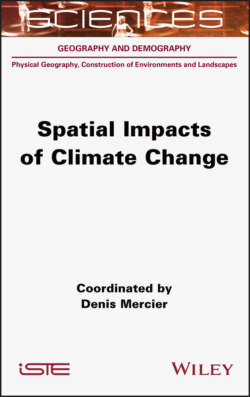Читать книгу Spatial Impacts of Climate Change - Denis Mercier - Страница 30
2.4.2. The melting of mountain glaciers
ОглавлениеThe World Glacier Monitoring Service (WGMS) provides standardized statistical data, such as ice front variations and mass balances1.
Figure 2.9. Annual mass balance of reference glaciers with more than 30 years of glaciological measurements from 1950 to 2018. The values of annual mass change are given on the y-axis in water equivalent (w.e.) per meter of water, which corresponds to tons per square meter (t/m2). For a color version of this figure, see www.iste.co.uk/mercier/climate.zip
(source: Zemp et al. 2017)
In particular, this graph (Figure 2.9) shows that seven of the ten most negative mass balance sheet years were recorded after 2010. A value of -1.0 m water equivalent per year represents a mass loss of 1,000 kg per square meter of ice cover or an annual loss of glacier-wide ice thickness of about 1.1 m per year, since the density of ice is only 0.9 times the density of water (Zemp et al. 2017).
Data at regional scales show that all of the world's glaciated mountain areas have been melting over the last few decades. Glaciers in North America and Central Europe are suffering the greatest losses. Between 2006 and 2015, the world's other glaciers melted at an average rate of 220 ± 30 billion tons per year, equivalent to 0.61 ± 0.08 mm per year in sea level rise (IPCC 2019).
Figure 2.10. Cumulative mass change from 1976 for regional and global averages based on reference glacier data. For a color version of this figure, see www.iste.co.uk/mercier/climate.zip
(source: Zemp et al. 2017)
Recent studies are trying to determine the date of disappearance of some glaciers. For example, the evolution and characteristics such as volume, area, ice thickness, runoff and duration and mode of disappearance of glaciers have been projected for the Austre Lovénbreen glacier on the BrØgger peninsula in northwestern Spitsbergen in the Svalbard archipelago (Wang et al. 2019; see Figures 2.11 and 2.12). Based on the 21st Century warming trend of the Arctic in the IPCC Fifth Assessment Report, glacier evolution was simulated under three hypothetical climate scenarios: pessimistic, high probability and optimistic. The results predicted that the glacier would retreat until it disappeared under all three scenarios, and its time to disappear would likely be about 111 years, that is by 2120.
Figure 2.11. Area and thickness of the Austre Lovénbreen glacier (Svalbard) simulated for different years: (i) 50th year (2060); (ii) disappearance of the western tributary; (iii) break between the main current and the eastern tributary; (iv) late decomposition according to the scenarios (a) optimistic; (b) high probability; (c) pessimistic. For a color version of this figure, see www.iste.co.uk/mercier/climate.zip
(source: Wang et al. 2019)
Figure 2.12. The Austre Lovenbreen glacier in northwestern Spitsbergen (Svalbard) in the background. The flat space in front of the glacier corresponds to the space freed by its melting since the beginning of the 20th Century. In the foreground, the prograding deltas on the Kongsfjorden are fed with sediments by the meltwater runoff from the glacier. For a color version of this figure, see www.iste.co.uk/mercier/climate.zip
(source: © photo by D. Mercier taken on August 24, 2017)
